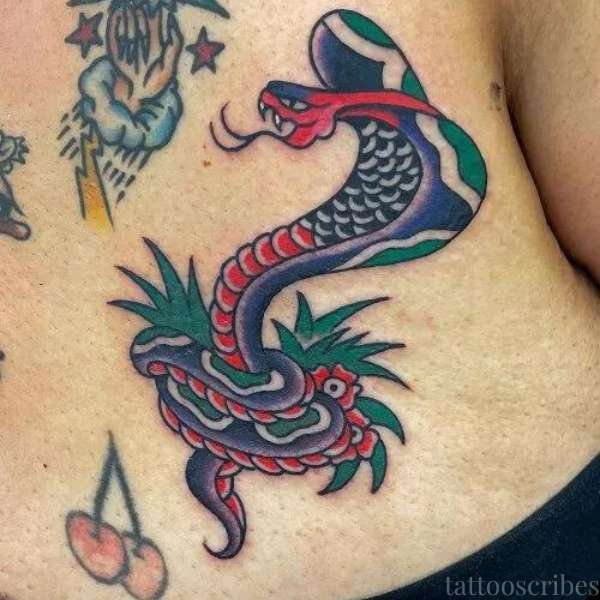Many people believe traditional tattoos are just for decoration, but they often hold deep meanings. Traditional tattoo styles are rich in symbolic tattoos, representing values like protection, self-expression, and life cycle.
From mythical tattoo meanings to tattoo color meanings, the history of tattoo symbolism across cultures showcases robust designs.
Keep reading to discover the hidden tattoo meanings behind these timeless symbols and designs.

What Do Traditional Tattoos Mean?
A traditional tattoo represents honor, courage, and self-expression. These designs often celebrate heritage, life experiences, and values passed through generations. They also embody artistry, symbolism, and a connection to tattoo history.
General Symbolism of Traditional Tattoos
- Heritage – Preserves cultural identity and ancestral traditions.
- Bravery – Reflects courage and daring spirit.
- Loyalty – Symbolizes commitment to family, friends, or beliefs.
- Personal Story – Represents individual experiences or milestones.
- Timeless Art – Embodies classic tattoo aesthetics that endure over time.
You may also like below posts:

Cultural Meanings of Traditional Tattoos
- Sailor Tattoos – Represented voyages, protection, and achievements at sea.
- Native Traditions – Marked rites of passage, social status, or spiritual connection.
- Military History – Signified rank, accomplishments, or camaraderie.
- Western Americana – Celebrated iconic symbols like eagles, roses, and anchors.
- Global Influence – Many traditional styles reflect cross-cultural exchanges in tattoo art.
Traditional Tattoo Variations and Designs
- Anchor Tattoo – Stability, grounding, and loyalty.
- Swallow Tattoo – Safe return, freedom, and travel.
- Pin-Up Tattoo – Beauty, charm, and nostalgia.
- Rose Tattoo – Love, honor, and passion.
- Skull Tattoo – Mortality, protection, and resilience.
- Color Variations – Bold reds, deep blacks, and vibrant blues highlight classic designs.
Read more on selecting the right artist here.

Other Symbolic Meanings of Traditional Tattoos
- Strength – Shows perseverance and resilience through life challenges.
- Adventure – Represents freedom, exploration, and curiosity.
- Identity – Marks individuality and personal expression.
- Heritage Preservation – Honors cultural or family traditions.
- Connection – Links wearer to a community or historical legacy.
Learn more about aftercare tips here.

Placement Ideas for Traditional Tattoos
- Forearm – Visibility and pride in personal symbolism.
- Chest – Close to the heart for intimate meanings.
- Shoulder – Strength and classic display area.
- Back – Larger designs for storytelling or family themes.
- Calf/Leg – Subtle yet visible for personal expression.
Frequently Asked Questions About Traditional Tattoos
What is a traditional tattoo?
A tattoo with classic designs reflecting cultural heritage and timeless style.
Are traditional tattoos still popular?
Yes, they remain iconic for their bold lines and symbolic meanings.
What do traditional tattoos usually represent?
They represent bravery, loyalty, heritage, and personal stories.
Can women get traditional tattoos?
Absolutely; traditional designs are worn by all genders.
What colors are typical in traditional tattoos?
Bold reds, blacks, greens, and blues define classic traditional ink.
Last word
Traditional tattoos are rich in symbolism, often representing values like strength, love, protection, and freedom.
Common motifs include anchors for stability, roses for love, and swallows for hope. These designs connect individuals to history, culture, and personal meaning.
